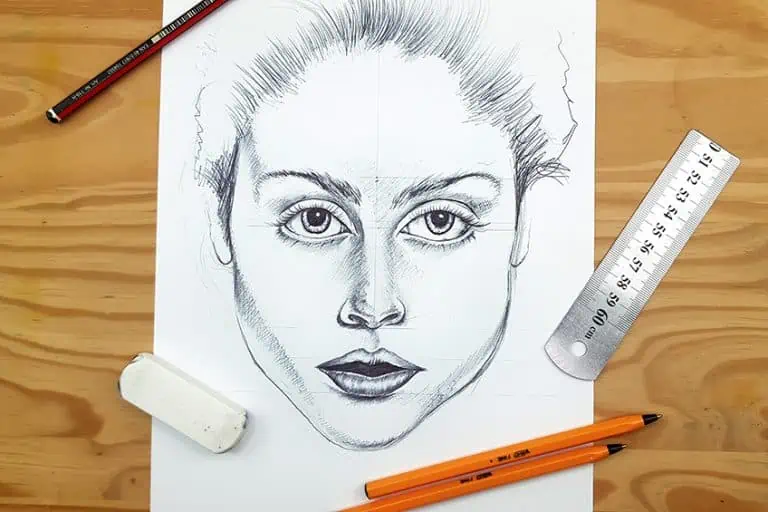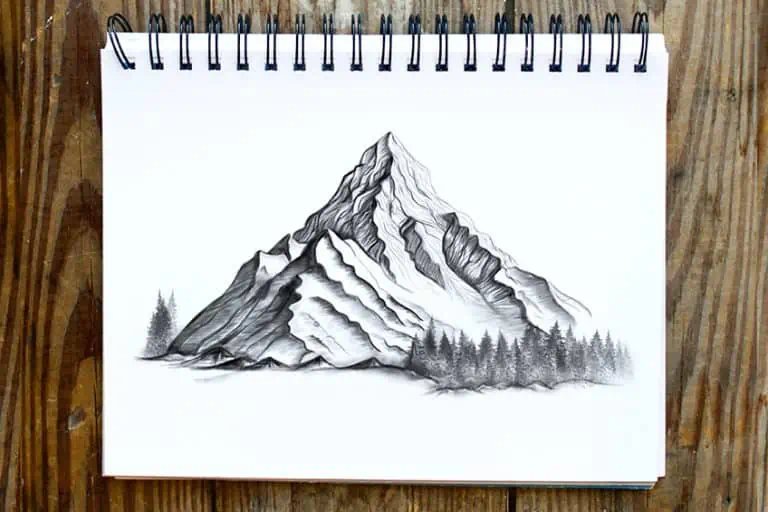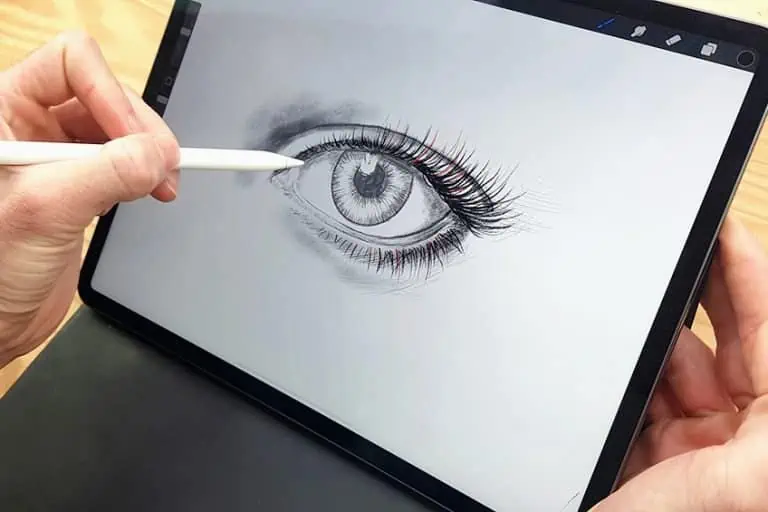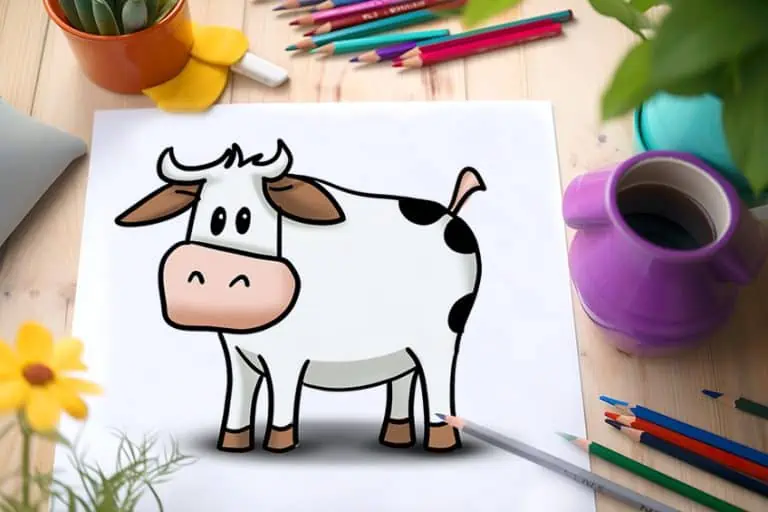Sheep Drawing – Drawing Woolly Wonders
This post may contain affiliate links. We may earn a small commission from purchases made through them, at no additional cost to you.
Embark on our simplified 13-step tutorial on how to draw a sheep, a delightful and fluffy creature of the pasture! Learn how to capture its gentle demeanor and soft, woolly texture, bringing this pastoral icon to life on your canvas. This straightforward and easy-to-follow guide is tailored for artists of every skill level, making the process of sketching the sheep both achievable and enjoyable.
Table of Contents
- 1 Woolly Wonders: How to Draw a Sheep Step-by-Step
- 1.1 Step 1: Begin Your Easy Sheep Drawing
- 1.2 Step 2: Draw the Main Body
- 1.3 Step 3: Add the Facial Guidelines to Your Lamb Drawing
- 1.4 Step 4: Outline the Lower Half of the Face
- 1.5 Step 5: Outline the Head on Your Lamb Drawing
- 1.6 Step 6: Continue Onto the Main Body
- 1.7 Step 7: Sketch the Sheep’s Facial Details
- 1.8 Step 8: Add the First Color Coat to Your Easy Sheep Drawing
- 1.9 Step 9: Continue to Apply a Color Coat
- 1.10 Step 10: Shade and Highlight Your Sheep Drawing
- 1.11 Step 11: Continue to Add Shading and Highlights
- 1.12 Step 12: Add a Ground Shadow
- 1.13 Step 13: Finalize Your Easy Sheep Drawing
- 2 Frequently Asked Questions
Woolly Wonders: How to Draw a Sheep Step-by-Step
This collage visually outlines each step towards creating the final image of a sheep. By following it, you will also master the technique of learning how to draw a sheep!

Step 1: Begin Your Easy Sheep Drawing
Start by drawing a circle to depict the head of the sheep.

Step 2: Draw the Main Body
Draw a larger circle below the head, slightly overlapping, to symbolize the sheep’s main body.

Step 3: Add the Facial Guidelines to Your Lamb Drawing
Draw a center line and three horizontal guidelines for your lamb sketch.

Step 4: Outline the Lower Half of the Face
Use the construction lines you just drew, and outline the lower half of the face on your lamb sketch.

Step 5: Outline the Head on Your Lamb Drawing
Continue to outline your easy sheep drawing, and draw the fluffy head and ears on each end.

Step 6: Continue Onto the Main Body
Begin this step by continuing to outline the main body and feet of the sheep. The main body should be somewhat like a cloud. You may now erase the unnecessary construction lines.

Step 7: Sketch the Sheep’s Facial Details
Use the guidelines as a reference to accurately draw the eyes, nose, and mouth of the sheep.

Step 8: Add the First Color Coat to Your Easy Sheep Drawing
Using a fine, sharp brush and cream-colored paint, apply an even layer over the sheep’s main body and head.

Step 9: Continue to Apply a Color Coat
With the same brush, select tan paint or peach paint, and evenly coat the face, ears, and legs.

Step 10: Shade and Highlight Your Sheep Drawing
Use a small, soft brush and black paint to shade around the head and main body. The initial layer of color should remain partially visible. With the same brush and white paint, highlight the edges of the sheep.

Step 11: Continue to Add Shading and Highlights
Begin to add soft highlights around your sheep with a soft brush and black paint. Continue onto the edges of the ears, face, and feet.

Step 12: Add a Ground Shadow
Use a small, soft brush and black paint to add shading beneath the sheep. Use a blending brush to extend the shading horizontally.

Step 13: Finalize Your Easy Sheep Drawing
With a fine, sharp brush dipped in black paint, meticulously outline and add detail to the sheep, completing your piece. This step marks the completion of our tutorial on how to draw a lamb, bringing your creative vision to a beautiful conclusion!

Congratulations on completing your sheep drawing in 13 thoughtful steps! Through this guided journey, you’ve not only crafted a charming representation of a sheep but also honed your artistic skills and attention to detail. Each step, from the initial sketches to the final touches, was crucial in bringing your sheep to life with its unique personality and fluffy texture. Remember, every drawing you create adds to your experience and skill set, paving the way for even more intricate and beautiful artwork in the future!
Frequently Asked Questions
Are There Any Tips for Adding Background Elements to My Sheep Drawing?
Adding background elements to my sheep drawings can enhance the overall composition and storytelling aspect. Personally, I like to consider the setting where the sheep might be found, whether it’s a lush pasture, a rustic barnyard, or a rolling hillside. I start by lightly sketching in the background elements, paying attention to perspective and scale to create depth. Then, I gradually add details such as trees, fences, or other farm scenery, using softer lines and muted colors to keep the focus on the sheep. Incorporating elements that complement the mood and atmosphere of the scene can elevate the narrative of my drawing and bring it to life.
How Can I Capture the Fluffy Texture of a Sheep’s Wool in My Drawing?
Capturing the fluffy texture of a sheep’s wool in my drawings is one of my favorite challenges. Personally, I love using a combination of techniques to achieve this effect. I start by sketching the basic shape of the sheep’s body and then layering short, curved strokes to create the appearance of soft, fluffy wool. I pay close attention to the direction of the strokes, following the natural flow of the wool and leaving some areas lighter to mimic highlights. By building up layers of texture and varying the density of the strokes, I can create a realistic and tactile representation of the sheep’s wool in my drawings.
Matthew Matthysen is a multidisciplinary artist. He completed his fine art degree, majoring in History of Art and Contemporary Drawing Practice at the University of Witwatersrand, South Africa. Before joining acrylgiessen In 2020, Matthew worked part-time as an art teacher at Reddford Blue Hills High school. Matthew creates drawing and painting tutorials for acrylgiessen and captures them not only photographically and in written form. He also records the creation of his works in his own creative studio as in video format, from which later with a voiceover and a video editor also drawing tutorials for the Youtube channel of acrylgiessen are created.
Learn more about Matthew Matthysen and about acrylgiessen.







